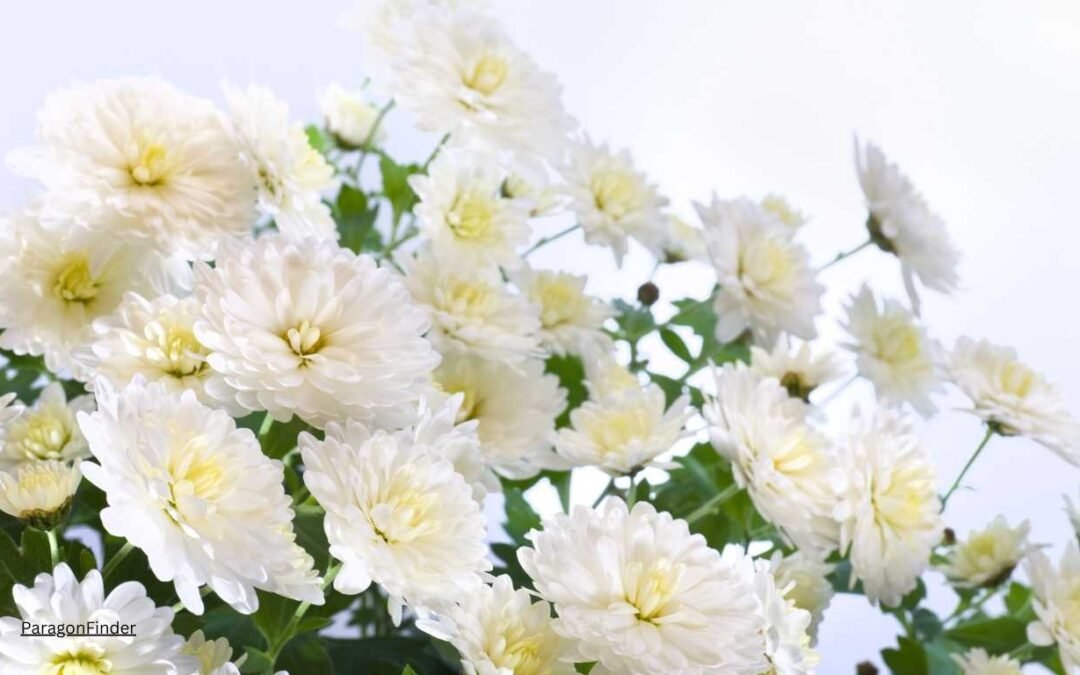White chrysanthemums, known for their pristine beauty and elegant appearance, have long held a special place in various cultures around the world. Beyond their ornamental value, these flowers offer a multitude of benefits that extend into the realms of health, wellness, and everyday living. In this article, we will delve into the lesser-known yet significant advantages of the white chrysanthemum flower, exploring its historical significance, health benefits, and practical uses.

Historical Significance and Cultural Importance
White chrysanthemums, scientifically known as Chrysanthemum morifolium, have been cultivated for thousands of years, particularly in East Asia. These flowers are revered in Chinese and Japanese cultures, symbolizing purity, nobility, and longevity. In traditional Chinese medicine, chrysanthemums have been used for their medicinal properties, believed to promote health and well-being. The white chrysanthemum flower, specifically, is associated with the notion of pure and lasting love, often used in ceremonies and rituals.
Health Benefits of White Chrysanthemum Flowers
1.Rich in Antioxidants
White chrysanthemum flowers are a powerhouse of antioxidants, which are essential in protecting the body from oxidative stress and free radical damage. These antioxidants, including flavonoids and phenolic acids, help in neutralizing harmful molecules, thereby reducing the risk of chronic diseases such as heart disease, diabetes, and cancer.
2.Anti-Inflammatory Properties
The anti-inflammatory compounds present in white chrysanthemums make them effective in reducing inflammation in the body. Inflammation is a common underlying factor in many chronic conditions, including arthritis, asthma, and inflammatory bowel diseases. Consuming chrysanthemum tea or incorporating the flowers into herbal remedies can help alleviate symptoms associated with these conditions.
3.Eye Health
Traditional Chinese medicine has long used white chrysanthemum flowers to improve vision and eye health. The flowers contain beta-carotene, which the body converts into vitamin A, a crucial nutrient for maintaining healthy eyesight. Regular consumption of chrysanthemum tea is believed to reduce eye strain and prevent age-related eye disorders such as macular degeneration and cataracts.
4.Immune System Support
White chrysanthemum flowers possess immune-boosting properties, making them an excellent natural remedy for enhancing the body’s defense mechanisms. The flower’s extracts have been found to stimulate the production of white blood cells, which play a vital role in fighting infections and maintaining overall health. This makes chrysanthemum tea a popular choice during cold and flu season.
5.Stress and Anxiety Relief
The calming effects of white chrysanthemum flowers are well-documented in traditional medicine. The flower’s natural compounds have a soothing effect on the nervous system, helping to alleviate stress and anxiety. Drinking chrysanthemum tea can promote relaxation, improve mood, and enhance sleep quality, making it an ideal beverage for those dealing with daily stressors.
Practical Uses of White Chrysanthemum Flowers
1.Culinary Uses
White chrysanthemums are not only beneficial for health but also versatile in the kitchen. The flowers can be used to make a fragrant and refreshing tea, which is a popular beverage in many Asian countries. Additionally, chrysanthemum petals can be added to salads, soups, and desserts, imparting a mild, floral flavor that enhances the overall taste of dishes.
2.Skincare and Beauty
The beauty industry has embraced the benefits of white chrysanthemums, incorporating their extracts into various skincare products. The flower’s anti-inflammatory and antioxidant properties make it an excellent ingredient for soothing irritated skin, reducing redness, and combating signs of aging. Chrysanthemum-infused creams, lotions, and masks are known to nourish the skin, leaving it radiant and youthful.
3.Natural Air Purifier
White chrysanthemum flowers can also be used as a natural air purifier. Studies have shown that these flowers can absorb pollutants such as formaldehyde, benzene, and ammonia from the air, improving indoor air quality. Placing potted chrysanthemum plants in your home or office can help create a healthier living environment.
White Chrysanthemum in Traditional Remedies
1.Herbal Infusions
Herbal infusions made from white chrysanthemum flowers are a staple in traditional Chinese medicine. These infusions are often combined with other herbs to enhance their therapeutic effects. For instance, chrysanthemum tea mixed with honeysuckle is commonly used to treat colds, sore throats, and respiratory infections. This powerful combination helps to clear heat, detoxify the body, and soothe the throat.
2.Topical Applications
The petals of white chrysanthemum flowers can be used in topical applications to treat skin conditions. A poultice made from crushed petals can be applied to inflamed or infected skin to reduce swelling and promote healing. Chrysanthemum extracts are also found in natural ointments and balms designed to relieve eczema, psoriasis, and other dermatological issues.
Growing and Caring for White Chrysanthemum Flowers
1.Planting Tips
Growing white chrysanthemums can be a rewarding experience, whether you are a seasoned gardener or a novice. These flowers thrive in well-drained soil and prefer a sunny location. When planting, ensure that the soil is enriched with organic matter to provide the necessary nutrients. It’s also important to space the plants adequately to allow for proper air circulation, which helps prevent fungal diseases.
2.Maintenance
White chrysanthemums require regular watering, especially during dry spells. However, be cautious not to overwater, as this can lead to root rot. Pruning is essential to promote healthy growth and encourage more blooms. Deadhead spent flowers regularly to extend the blooming period and maintain the plant’s aesthetic appeal.
3.Pest and Disease Control
Like any other plant, white chrysanthemums are susceptible to pests and diseases. Common pests include aphids, spider mites, and caterpillars. Natural insecticides or insecticidal soaps can help manage these pests effectively. Fungal diseases such as powdery mildew and leaf spot can be prevented by ensuring good air circulation and avoiding overhead watering.
Personal Reflections on the Benefits of White Chrysanthemum Flowers
Having explored the myriad benefits of white chrysanthemum flowers, it’s clear that these blooms are much more than just ornamental plants. Their health-promoting properties, versatility in culinary and skincare applications, and practical uses make them a valuable addition to any home or garden. Personally, incorporating white chrysanthemum tea into my daily routine has been a game-changer. The calming effects help me unwind after a long day, and the antioxidant-rich beverage supports my overall well-being.
Moreover, growing white chrysanthemums in my garden has not only enhanced the beauty of my outdoor space but also provided a sense of tranquility and connection to nature. The process of tending to these flowers, from planting to harvesting, is incredibly therapeutic and rewarding.
In conclusion, the white chrysanthemum flower is a true gem in the world of flora. Its benefits extend far beyond its visual appeal, offering a range of advantages that enhance health, wellness, and everyday living. Whether you choose to enjoy a soothing cup of chrysanthemum tea, incorporate the petals into your skincare regimen, or simply admire their beauty in your garden, the white chrysanthemum is sure to bring joy and wellness into your life.

